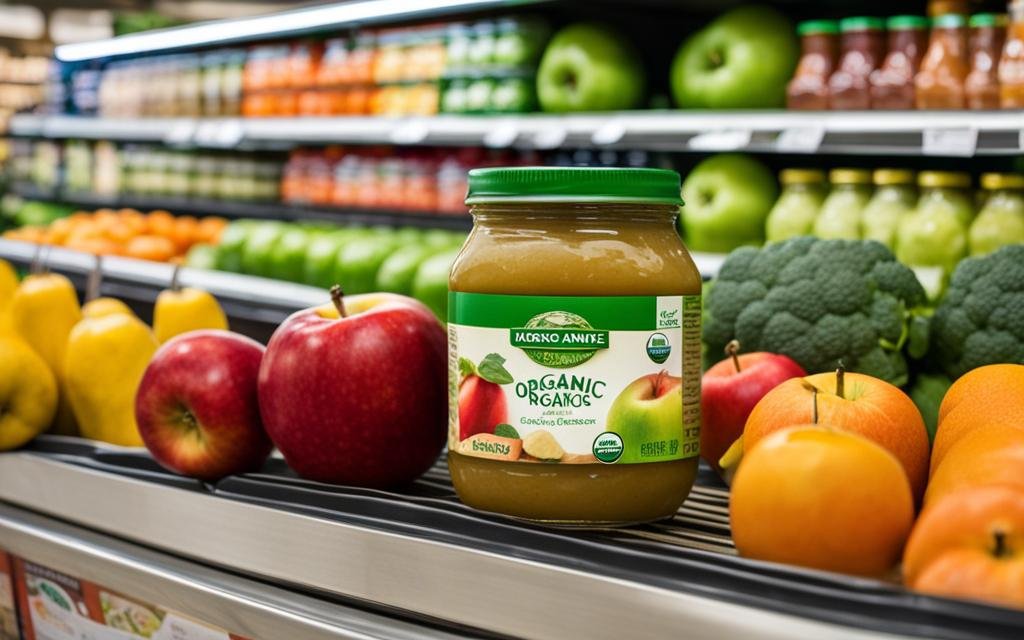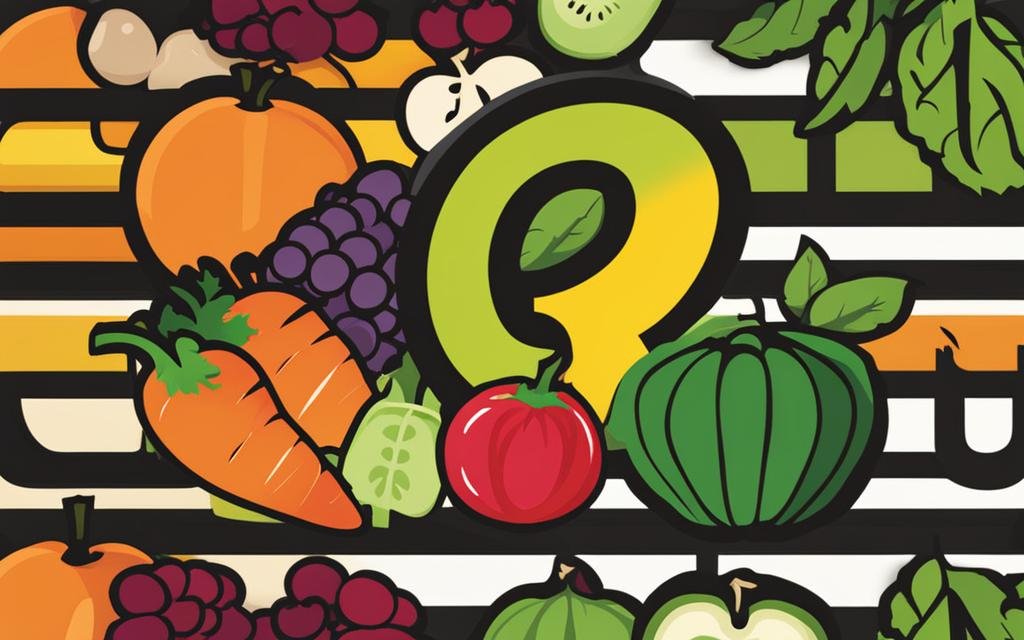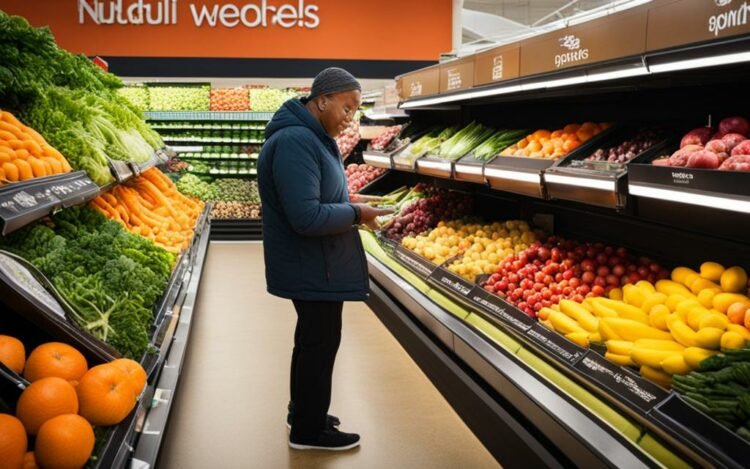When it comes to grocery shopping, the decision to buy organic can be a complex one. Organic food is often more expensive than conventional options, so it’s important to understand what organic really means and how it can benefit you and your family.
Organic meats, poultry, eggs, and dairy products are made without the use of antibiotics or growth hormones, while organic fruits and vegetables are grown without pesticides, synthetic fertilizers, sewage sludge, irradiation, or genetic engineering. While organic food is not inherently healthier, studies have shown that it may have lower levels of toxic chemicals and higher levels of certain vitamins and minerals. When shopping organic, it’s important to look for products that are certified organic by a government-approved certifier.
But how can you shop for organic food while sticking to a budget? In this article, we will provide you with smart tips and strategies to navigate the grocery aisles and find affordable organic options, all while being eco-friendly.
Key Takeaways:
- Understand the meaning of organic and its potential benefits.
- Look for certified organic products when shopping.
- Reduce chemical exposure and potentially access higher levels of certain nutrients by choosing organic.
- Learn how to decipher organic labels and understand their requirements.
- Use smart shopping tips to save money on organic food without compromising quality.
Now that you have a basic understanding of organic food and its benefits, let’s explore the various ways you can shop for organic food on a budget. By following these tips, you can prioritize your health and the environment without breaking the bank.
Benefits of Shopping Organic
Shopping organic can offer several benefits. Firstly, it can reduce your exposure to potentially harmful chemicals found in pesticides, herbicides, and fungicides used in conventional farming. Organic foods have been shown to have lower levels of toxic metabolites, including heavy metals, synthetic fertilizers, and pesticide residues.
Additionally, some studies have found that organic foods may contain higher levels of certain vitamins and minerals, such as vitamin C, iron, magnesium, and phosphorus. There may also be differences in antioxidant concentrations and fatty acid profiles between organic and conventional foods.
However, it’s important to note that nutritional differences can vary among all types of fruits and vegetables, regardless of whether they are organic or not.
Reduced Chemical Exposure
- Organic foods have lower levels of pesticides and synthetic fertilizers.
- Reduced exposure to toxic metabolites, heavy metals, and pesticide residues.
Nutrition Differences
- Organic foods may contain higher levels of certain vitamins and minerals.
- Differences in antioxidant concentrations and fatty acid profiles.
Understanding Organic Labels
When shopping for organic food, it’s important to understand the different types of organic labels. The USDA organic label is given to products that meet specific standards for organic production.
A product can be labeled as “100% organic” if it is completely organic or made from solely organic ingredients.
“Organic” products must have at least 95% organic ingredients, while “made with organic ingredients” products contain at least 70% certified organic ingredients.
It’s important to read the product packaging to know exactly what you’re getting.

Smart Tips for Organic Shopping on a Budget
If you’re shopping organic on a budget, there are several smart tips you can follow to save money and make the most of your grocery shopping. These tips will help you prioritize your purchases, identify organic options, and find affordable alternatives.
1. Look for the PLU Sticker on Produce
When shopping for organic produce, look for the PLU sticker with a five-digit code beginning with a nine. The PLU code indicates that the item is organic. By checking the PLU sticker, you can easily identify and choose organic options.
2. Familiarize Yourself with the Clean Fifteen and Dirty Dozen Lists
The Environmental Working Group’s Clean Fifteen and Dirty Dozen lists are helpful references when shopping for organic produce. The Clean Fifteen lists the fruits and vegetables with the least pesticide residues, while the Dirty Dozen identifies those with the highest residues. By consulting these lists, you can prioritize your organic purchases based on your budget and concerns about pesticide exposure.

3. Buy Seasonal Produce
Buying seasonal produce is not only a great way to enjoy fresh and flavorful fruits and vegetables, but it can also be more affordable. When fruits and vegetables are in abundance, their prices tend to be lower. Take advantage of seasonal produce to save money while still enjoying organic options.
4. Consider Shopping at Farmer’s Markets
Farmer’s markets are excellent sources for locally produced organic food. Not only can you support local farmers and businesses, but you may also find more affordable organic options compared to grocery stores. The direct connection between the farmers and customers often removes additional costs, making farmer’s markets a budget-friendly choice.
By following these smart tips for organic shopping on a budget, you can prioritize organic options, save money, and make sustainable choices that are good for your health and the environment.
Environmental Benefits of Organic Shopping
Shopping organic not only benefits your health but also the environment. Organic farming practices are more sustainable and eco-friendly compared to conventional farming. By choosing organic products, you can contribute to sustainability, reduced pollution, conservation, and energy efficiency.
One of the key environmental benefits of organic farming is the reduction of pollution. Organic farmers avoid using synthetic fertilizers and pesticides that can harm the environment and contaminate water sources. This helps maintain the quality of our water systems and preserves the biodiversity of aquatic ecosystems.
Additionally, organic farming practices prioritize the conservation of resources. Organic farmers use natural methods to manage pests and diseases, which helps reduce the overall use of water and energy. The focus on soil health in organic farming also leads to reduced soil erosion and increased soil fertility, promoting long-term sustainability.

Moreover, the energy efficiency of organic farming is worth noting. Organic farms tend to rely on natural processes and systems, requiring less energy-intensive practices such as the production of synthetic fertilizers and pesticides. As a result, organic farming contributes to a reduced carbon footprint and a more sustainable use of resources.
Environmental Benefits of Organic Shopping:
- Promotes sustainability
- Reduces pollution
- Conserves water resources
- Prevents soil erosion
- Increases soil fertility
- Uses less energy
By choosing organic products, you support these more environmentally friendly practices and contribute to a healthier planet. Incorporating organic shopping into your lifestyle is a simple yet impactful way to make a positive difference for both your well-being and the environment.
Smart Grocery Shopping for Students on a Budget
For students on a tight budget, smart grocery shopping is essential. By implementing practical strategies, you can make your money stretch further while still eating healthily. Here are some tips to help you navigate grocery shopping on a student budget:
Finding Affordable Options
Start by exploring discount grocery stores that offer budget-friendly options. Stores like No Frills, Food Basics, Dollarama, and FreshCo often have lower prices compared to traditional supermarkets. Take the time to familiarize yourself with their product selection and pricing to identify the most cost-effective options for your shopping needs.
Create a Shopping List and Stick to Budget
Establish a realistic monthly or weekly budget for your groceries. This will help you prioritize your spending and avoid overspending. Create a detailed shopping list before heading to the store and make an effort to stick to it. Having a list will prevent impulse purchases and ensure that you only buy what you need.
Compare Prices and Take Advantage of Sales
Before making a purchase, compare prices between different stores to ensure you’re getting the best deal. Check weekly flyers for discount sales and special offers. By planning your shopping around these sales, you can save money on your grocery bill.
Consider Farmer’s Markets
Farmer’s markets are great places to find affordable, locally sourced produce. Not only will you be supporting local farmers, but you can also access a variety of fresh fruits, vegetables, and other farm products. Prices at farmer’s markets can often be competitive or even lower than those in traditional stores.

Buy in Bulk
Buying food in bulk can save you money in the long run. Consider shopping at bulk buying stores like Bulk Barn and Costco, where you can find a wide range of products at discounted prices. Be mindful of expiration dates and storage requirements to avoid wasted food.
Utilize Community Resources
If you find yourself in need of emergency assistance, consider utilizing community resources such as food banks. These organizations provide food to individuals and families facing financial hardship, and can help you during challenging times.
Explore Online Shopping and Delivery Services
Online grocery shopping and delivery services can provide convenience and potential cost savings. Compare prices and delivery fees to find the best option for your budget. Take advantage of promotions and discount codes to further maximize your savings.
By applying these smart grocery shopping tips, you can maintain a healthy diet while staying within your student budget. With careful planning, price comparisons, and utilizing the right resources, you can make the most of every dollar spent on groceries.
Practical Tips for Eco-Friendly Grocery Shopping
Eco-friendly grocery shopping involves reducing plastic waste and making sustainable choices. By implementing a few simple practices, you can make a positive impact on the environment while still enjoying the convenience of grocery shopping.
- Bring your own reusable grocery bags and produce bags: When you go grocery shopping, bring your own reusable bags to reduce the use of plastic bags. Opt for sturdy, washable bags that you can use over and over again. Additionally, consider using reusable produce bags instead of the thin plastic ones provided by the store.
- Choose local and seasonal produce: Support local farmers and reduce the carbon footprint associated with long-distance food transportation by choosing locally grown produce. Not only is local produce often fresher, but it also tends to be more affordable. Furthermore, selecting seasonal produce ensures that you are getting the most flavorful and nutrient-rich options available.
- Consider adopting a plant-based diet: An effective way to reduce the environmental impact of your food choices is by adopting a plant-based diet or simply reducing your meat consumption. Animal agriculture has a significant carbon footprint, and by incorporating more plant-based meals into your diet, you can contribute to a more sustainable food system. Explore delicious vegetarian and vegan recipes to inspire your plant-based cooking journey.
- Opt for grass-fed meat: If you do consume meat, choose grass-fed options whenever possible. Grass-fed meat comes from animals that have been raised on a natural diet of grass and forage, which is better for their health and the environment. It usually involves more sustainable farming practices and avoids the use of hormones and antibiotics commonly found in conventional meat production.
- Look for zero-waste grocery stores: Zero-waste grocery stores are emerging as a sustainable solution to reduce packaging waste. These stores encourage customers to bring their own containers and buy products in bulk, minimizing the need for single-use packaging. Explore zero-waste stores in your area and support their mission to create a more sustainable shopping experience.
By implementing these practical tips, you can actively contribute to reducing plastic waste, supporting local agriculture, and making more sustainable choices when grocery shopping. Together, these small changes can make a big difference in reducing your ecological footprint and creating a more sustainable future.
Conclusion
Smart shopping for organic food on a budget and making eco-friendly choices is achievable with the right strategies. By understanding what organic means, the benefits it offers, and how to navigate organic grocery shopping, you can make informed decisions that prioritize your health and the environment.
When it comes to shopping organic on a budget, practical tips can make a big difference. Creating a shopping list helps you stay focused and avoid impulse purchases. Comparing prices between stores and taking advantage of discount sales and special offers can help you stretch your budget further. Buying seasonal produce and utilizing community resources like farmer’s markets and food banks can provide affordable options. Additionally, considering bulk buying at stores like Bulk Barn and Costco can save you money in the long run.
Eco-friendly grocery shopping is also within reach. Bringing your own reusable grocery bags and produce bags reduces plastic waste. Opting for local and seasonal produce supports local farmers and offers fresher, more affordable options. Adopting a plant-based diet or reducing meat consumption can reduce the environmental impact of animal agriculture. When consuming meat, choosing grass-fed options is a more eco-friendly choice. Exploring zero-waste grocery stores can reduce packaging waste and promote sustainable shopping habits.
Remember, even small changes in your shopping habits can have a significant impact on your well-being and the planet. By following these tips and strategies, you can make organic food budget-friendly, shop in an eco-friendly manner, and make smart grocery choices as a student.
FAQ
What does “organic” mean when it comes to food?
Organic food refers to products that are grown or produced without the use of synthetic pesticides, fertilizers, antibiotics, growth hormones, genetic engineering, or irradiation. It follows specific standards set by government-approved certifiers.
Are organic foods healthier than non-organic foods?
While organic foods may have lower levels of toxic chemicals and higher levels of certain vitamins and minerals, nutritional differences can vary among all types of fruits and vegetables, regardless of whether they are organic or not.
How do I know if a product is organic?
Look for the USDA organic label on the packaging. “100% organic” means the product is completely organic, “organic” means it has at least 95% organic ingredients, and “made with organic ingredients” means it contains at least 70% certified organic ingredients.
How can I shop organic on a budget?
Look for the PLU sticker with a nine-digit code to identify organic produce. Use the Environmental Working Group’s Clean Fifteen and Dirty Dozen lists as a guide for prioritizing organic purchases. Buy seasonal produce and consider shopping at farmer’s markets for more affordable options.
What are the environmental benefits of organic shopping?
Organic farming practices are more sustainable and eco-friendly, as they reduce pollution, conserve water, prevent soil erosion, increase soil fertility, and use less energy. Organic farming also avoids the use of synthetic fertilizers and pesticides that can harm the environment.
How can students shop for groceries on a tight budget?
Look for affordable options at discount grocery stores, establish a realistic budget, create a shopping list, compare prices, buy seasonal produce, and consider shopping at farmer’s markets. Buying food in bulk and utilizing community resources like food banks can also help save money.
How can I make eco-friendly choices while grocery shopping?
Bring your own reusable grocery bags and produce bags to reduce plastic waste. Choose local and seasonal produce, consider adopting a plant-based diet or reducing meat consumption, and look for zero-waste grocery stores that minimize packaging waste.
How can I shop for organic food on a budget and be eco-friendly?
By following smart shopping tips, such as buying organic produce with PLU sticker codes, utilizing the Clean Fifteen and Dirty Dozen lists, and shopping for seasonal and locally sourced produce, you can shop organic on a budget. Additionally, practicing eco-friendly choices like reducing plastic waste and supporting sustainable farming practices will contribute to a healthier you and a healthier planet.

